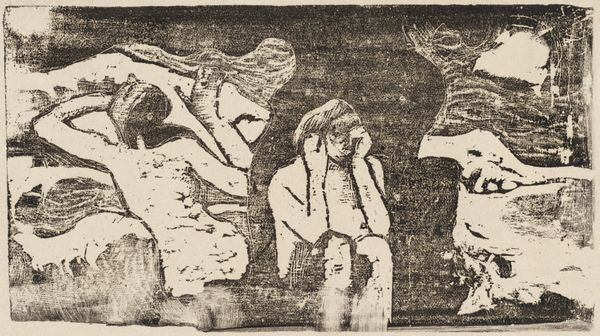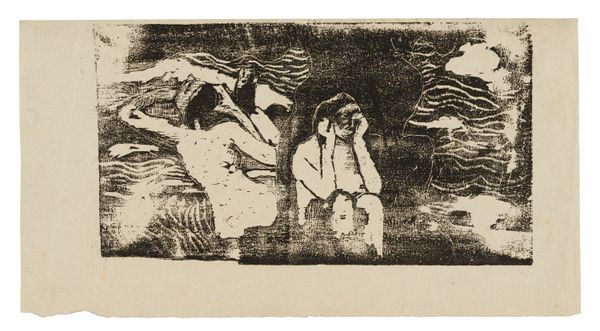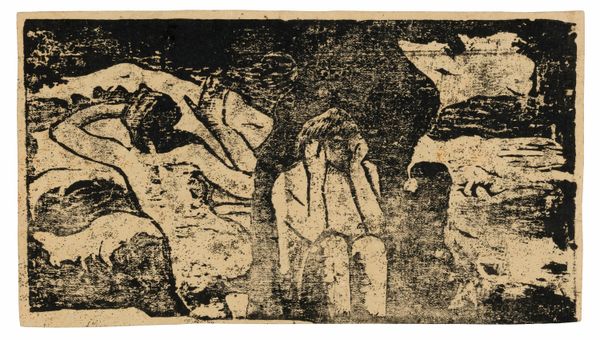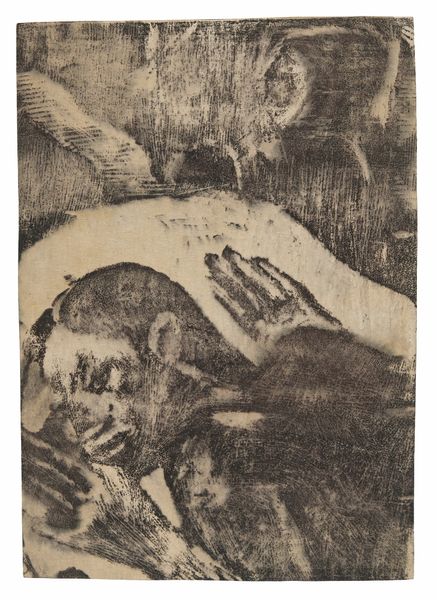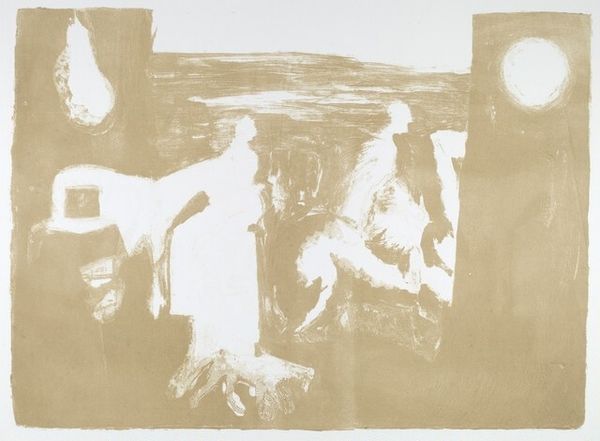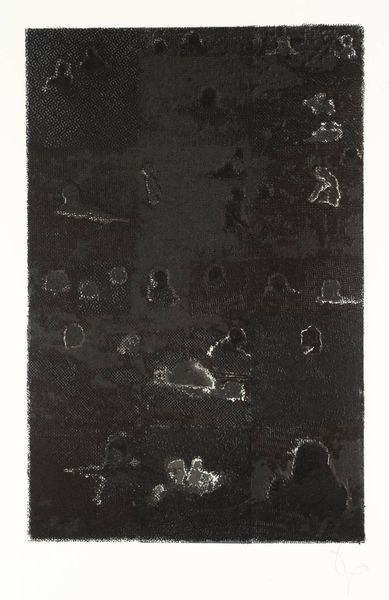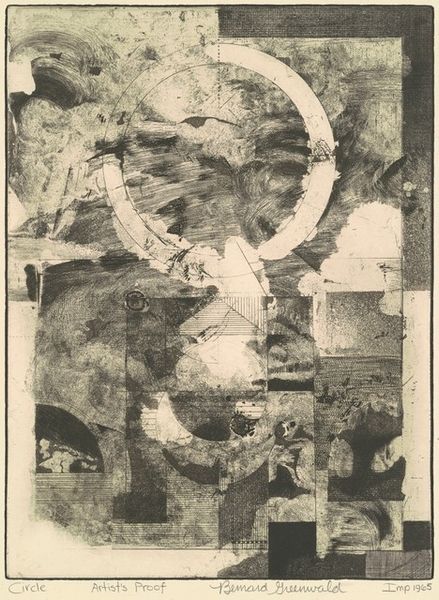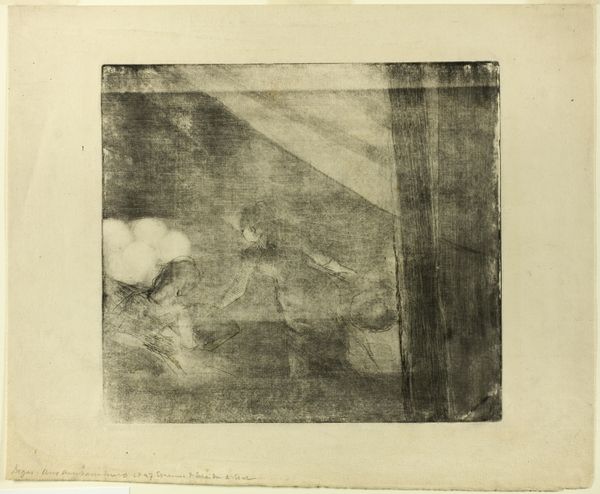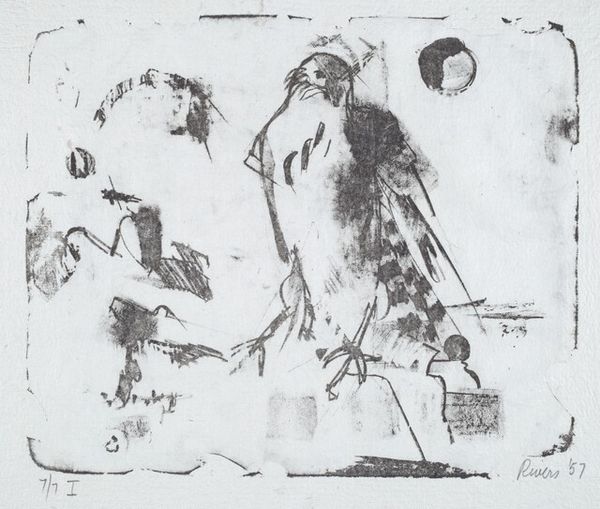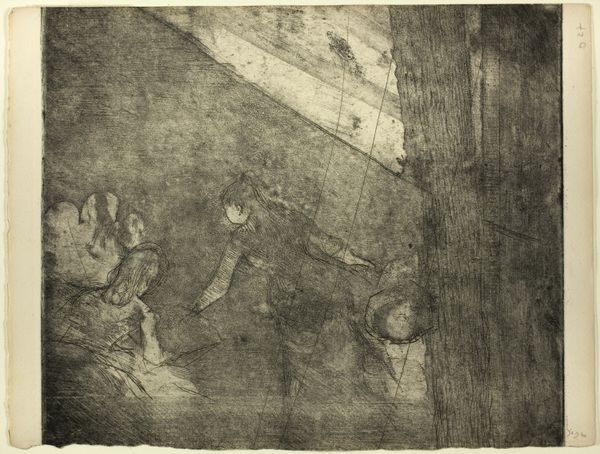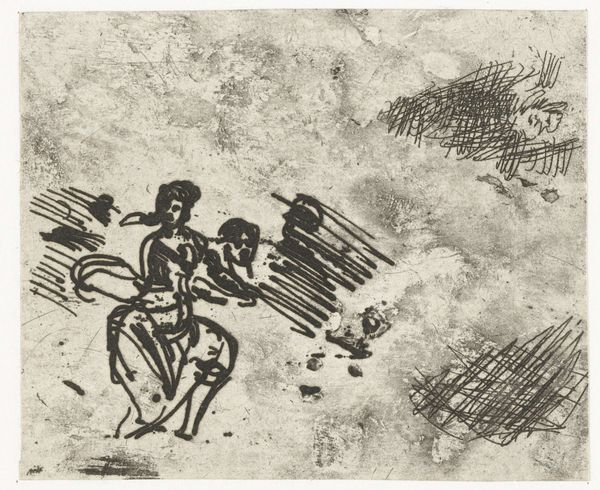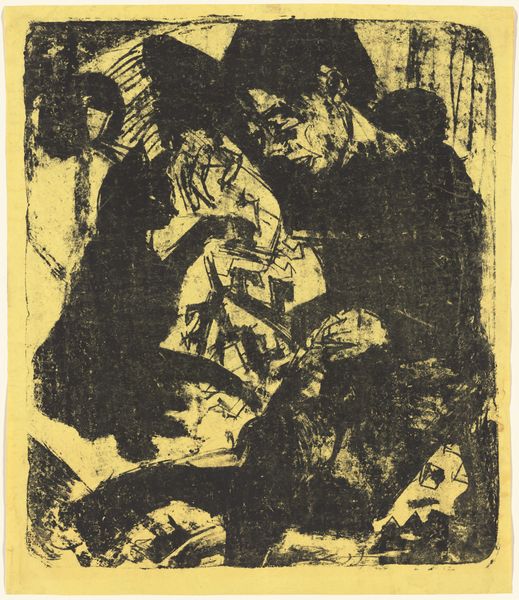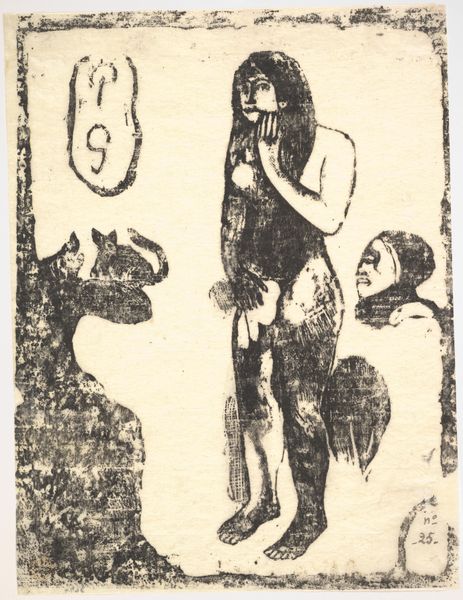
print, woodcut
# print
#
figuration
#
woodcut
#
line
#
symbolism
#
nude
Copyright: National Gallery of Art: CC0 1.0
"At the Black Rocks" is an enigmatic print by Paul Gauguin, rendered in stark black and white. The composition is dominated by curvilinear forms suggesting figures intertwined with the rough, textured landscape. These shapes are not clearly defined, blurring the boundaries between body and nature, creating an almost dreamlike, disorienting effect. Gauguin's use of the woodcut technique, with its inherent roughness and stark contrasts, aligns with his broader artistic project of challenging established modes of representation. The simplification of form and flattening of space can be seen as a rejection of Western illusionistic traditions. Instead, Gauguin draws on the formal qualities of non-Western art. The interplay of positive and negative space, coupled with the ambiguous figures, suggests a deeper exploration of primal emotions and spiritual themes. Ultimately, Gauguin's formal treatment invites an interpretation of subjectivity and existential inquiry, rather than any fixed narrative, prompting ongoing dialogue and new interpretations.
Comments
No comments
Be the first to comment and join the conversation on the ultimate creative platform.
